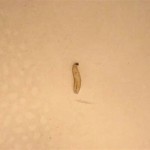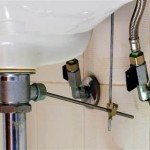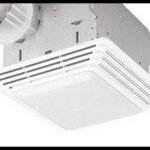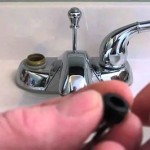How To Clean The Dust Out Of Your Bathroom Fan
The bathroom fan is an essential fixture that helps to ventilate moisture and odors, preventing mold and mildew growth. Over time, dust, lint, and debris accumulate within the fan housing and on the fan blades, reducing its efficiency and potentially leading to overheating or even fire hazards. Regular cleaning is crucial to maintain optimal performance and extend the life of the bathroom fan. This article provides a comprehensive guide on how to safely and effectively clean the dust out of a bathroom fan.
Safety Precautions and Necessary Tools
Before commencing any cleaning procedure involving electrical appliances, safety should be the primary concern. The following precautions are essential:
Turning Off the Power: Locate the circuit breaker that controls the bathroom fan. Flip the breaker to the "off" position to disconnect the power supply to the fan. This eliminates the risk of electrical shock during the cleaning process. Double-check that the fan is indeed powered off by attempting to turn it on via the wall switch.
Gathering Supplies: Assemble all the necessary tools and cleaning supplies before starting the cleaning process. The following items are typically required:
Screwdriver: A screwdriver, either Phillips head or flathead, depending on the type of screws used to secure the fan cover.
Vacuum Cleaner with Brush Attachment: A vacuum cleaner with a brush attachment is essential for removing loose dust and debris from the fan components. A soft-bristled brush is preferable to avoid scratching or damaging any surfaces.
Ladder or Step Stool: A sturdy ladder or step stool is needed to safely reach the bathroom fan, which is usually mounted on the ceiling.
Cleaning Solution: A mild cleaning solution, such as warm water mixed with a small amount of dish soap, is suitable for cleaning the fan blades and housing. Avoid using harsh chemicals or abrasive cleaners, as they may damage the fan components.
Microfiber Cloths or Sponges: Soft microfiber cloths or sponges are ideal for wiping down the fan blades and housing. They are gentle on surfaces and effectively remove dirt and grime.
Dust Mask: Wearing a dust mask is recommended to protect against inhaling dust and airborne particles during the cleaning process.
Eye Protection: Wearing safety glasses or goggles is advisable to prevent dust and debris from entering the eyes.
Gloves: Wearing gloves can protect hands from dirt and grime and prevent skin irritation from cleaning solutions.
Step-by-Step Cleaning Process
Once the safety precautions are observed and the necessary tools are prepared, the following steps outline the detailed cleaning process for a typical bathroom fan:
Removing the Fan Cover: Carefully climb onto the ladder or step stool, ensuring a stable and secure footing. Locate the screws or clips that secure the fan cover to the fan housing. Using the appropriate screwdriver, carefully remove the screws. In some cases, the cover may be held in place by spring clips, which can be gently squeezed to release the cover. Once the screws or clips are removed, gently pull the fan cover down. It may be dusty, so hold it away from the face.
Vacuuming the Fan Housing and Blades: With the fan cover removed, the interior components of the bathroom fan are exposed. Using the vacuum cleaner with the brush attachment, carefully vacuum the fan housing, paying close attention to the areas where dust and debris have accumulated. Thoroughly vacuum the fan blades, removing any loose dust, lint, or debris. Be careful not to dislodge or damage any wires or electrical components.
Cleaning the Fan Blades and Cover: Prepare a mild cleaning solution by mixing warm water with a small amount of dish soap. Dip a microfiber cloth or sponge into the cleaning solution and wring out any excess liquid. Gently wipe down the fan blades, removing any remaining dirt or grime. Rinse the cloth or sponge frequently and replace the cleaning solution as needed. Similarly, clean the fan cover with the cleaning solution and wipe it dry with a clean, dry microfiber cloth.
Cleaning the Fan Motor (If Accessible): In some bathroom fan models, the fan motor may be accessible for cleaning. If the motor is easily removable, carefully detach it from the fan housing, following the manufacturer's instructions. Use a soft brush or compressed air to remove any dust or debris from the motor. Do not use any liquids or cleaning solutions on the motor, as this could damage its electrical components. If the motor is not easily removable, carefully vacuum around it with the brush attachment.
Reassembling the Fan: Once all the components are thoroughly cleaned and dried, carefully reassemble the bathroom fan. If the fan motor was removed, reattach it to the fan housing, ensuring it is securely fastened. Align the fan cover with the fan housing and reattach the screws or clips that were removed earlier.
Testing the Fan: After reassembling the fan, return to the circuit breaker and flip it back to the "on" position. Operate the fan using the wall switch to ensure it is functioning correctly. Listen for any unusual noises or vibrations. If the fan does not operate properly, turn off the power and double-check all connections and components.
Alternative Cleaning Methods and Considerations
While the previously outlined method is a common and effective approach to cleaning bathroom fans, alternative methods and considerations may be beneficial in certain situations:
Using Compressed Air: Compressed air can be used to dislodge stubborn dust and debris from hard-to-reach areas within the fan housing. Use short bursts of compressed air to avoid damaging any components. This method is particularly effective for cleaning the fan motor if it is not easily removable.
Specialized Cleaning Products: In cases of heavy buildup or stubborn grime, specialized cleaning products designed for electrical appliances may be used. Ensure that the chosen product is safe for use on plastic and metal components and follow the manufacturer's instructions carefully. Always test the product on a small, inconspicuous area before applying it to the entire fan.
Professional Cleaning: For extremely dirty or difficult-to-clean bathroom fans, consider hiring a professional cleaning service. Professionals have the expertise and equipment to safely and effectively clean bathroom fans without causing damage.
Frequency of Cleaning: The frequency of cleaning depends on the usage and environment of the bathroom. In general, it is recommended to clean the bathroom fan at least every six months. Bathrooms with high humidity levels or frequent usage may require more frequent cleaning.
Addressing Underlying Issues: While cleaning the bathroom fan removes accumulated dust and debris, it is also important to address any underlying issues that may be contributing to the problem. For example, inadequate ventilation can lead to moisture buildup, which attracts dust and promotes mold growth. Ensure that the bathroom fan is properly sized for the room and that it is used regularly during and after showers or baths. Consider installing a timer switch to ensure the fan runs for an adequate amount of time after use.
Replacing the Fan: If the bathroom fan is old, damaged, or excessively noisy, it may be more cost-effective to replace it rather than attempt to clean it. Modern bathroom fans are more energy-efficient and quieter than older models. Replacing the fan can improve ventilation and reduce noise levels in the bathroom.
Understanding Fan Types: Different types of bathroom fans exist, each with potentially unique cleaning requirements. Some fans have more intricate designs or difficult-to-access components. Consult the manufacturer's instructions for specific cleaning recommendations for the particular fan model.
By following these guidelines, individuals can effectively clean the dust out of their bathroom fans, ensuring optimal performance, preventing potential hazards, and maintaining a clean and healthy bathroom environment. Regular maintenance and attention to detail are key to prolonging the life of the bathroom fan and maximizing its effectiveness.
Proper disposal of the removed dust and debris is also important. Seal the waste in a plastic bag before discarding it in the trash. This helps prevent the dust from becoming airborne again and spreading throughout the house.
Finally, remember to document the cleaning process, especially if the fan is part of a rental property or home maintenance record. This documentation can be useful for tracking cleaning schedules and demonstrating proper maintenance practices.

3 Ways To Clean A Bathroom Fan Wikihow

How To Clean Bathroom Ceiling Fans Simple Method

How To Clean Bathroom Exhaust Fan Duct Ace Sydney Electricians

3 Ways To Clean A Bathroom Fan Wikihow

3 Ways To Clean A Bathroom Fan Wikihow

How To Clean A Bathroom Fan Diy Family Handyman

How To Super Clean Your Bathroom Exhaust Fan

How To Clean The Bathroom Exhaust Fan Metropolitan Electrical Contractors Local Technicians

How To Clean A Bathroom Exhaust Fan Homeserve Usa

How To Clean Your Bath Fan Diy Home Repairs
Related Posts







